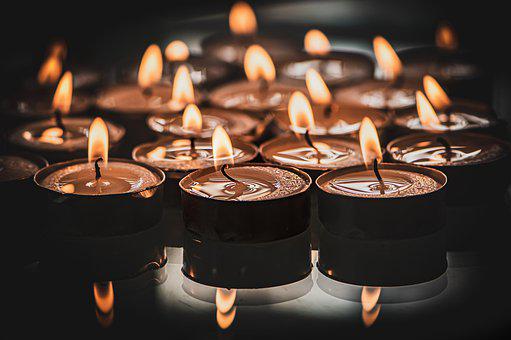New York and Los Angeles., Pharoah Sanders, an influential tenor saxophonist revered in the jazz world for the spirituality of his work, has died, his record label reported. He was 81 years old. He was one of the most creative figures who made both Indian and African music his own, taking the sound of his instrument to unsuspected limits.
Sanders, who began his career playing alongside John Coltrane in the 1960s, died in Los Angeles early Saturday, tweeted Luaka Bop, the label that released his 2021 album, Promises. He did not specify a cause.
“We are devastated to share that Pharoah Sanders has passed away. He left peacefully surrounded by loving family and friends in Los Angeles this morning. Forever and ever the most beautiful human being; may he rest in peace,” said the company’s message on Twitter, accompanied by a heart emoji.
Among the best-known works of the saxophonist is his work in two parts The Creator Has a Master Plan, from the album Karma released in 1969. The track is almost 33 minutes long.
Sanders, who led the movement free jazz To new heights, he practically attacked his saxophone by excessively blowing the mouthpiece –which he collected by the hundreds–, biting the reed and even shouting into the bell of the instrument.
This Coltrane disciple, who played aggressive solos on Coltrane’s latest album, live in japan, he was often seen as a successor to his teacher, who died suddenly in 1967.
Ornette Coleman -perhaps the most important pioneer of the free jazz– defined Sanders as “probably the best tenor sax player in the world”.
But Sanders, who also played soprano and alto saxophone, failed to command the unanimity of the public and never enjoyed the commercial success of Coltrane, Coleman or other historic jazz innovators.
With solos that went from shrill and squawking to silky and melodic, he was described as the godfather of spiritual and even cosmic jazz, although he always rejected labels.
Born in Little Rock, Arkansas, in 1940, he began his musical life playing the drums, and later the clarinet, in church. In high school, he started renting the saxophone from the school. After this stage he moved to Oakland, California, where he intended to attend art school. But he soon moved to New York to join the avant-garde jazz scene. He did hitch-hiking across the country, he told the magazine The New Yorker, in 2020.
Arriving in 1962, he could barely afford New York life. “I was trying to survive somehow,” he told the magazine. “I used to have a few jobs here and there, earn five dollars, buy food, pizza. He had no money at all.”
In 1965, he joined the Coltrane gang. “I couldn’t understand why he wanted me to play him, because at that point I didn’t feel like I was ready to play him,” Sanders said. “He always told me, ‘play.’ That ‘s what I did”.
“Surprisingly beautiful”
When Coltrane died, Sanders continued to play for a time with the North Carolina-born musician’s wife, Alice. He also started leading his own gangs. His most commercially successful work was for Impulse Records, including the renowned Karma.
After more than a decade of playing but not recording albums, Sanders released the much-admired promises, with producer Floating Points and the London Symphony Orchestra. rolling stone he called it “stunningly minimalist and startlingly beautiful.”
Known for his style called spiritual jazz, Sanders, still playing actively, noted in the interview with The New Yorker of 2020 that “most of the time I don’t know what I want to play. So I start and try to get it right, and make it tie in with some other feeling in the music. Since I play a note, maybe it could mean love. And then one more note, something else. Keep it up until it becomes, maybe, something beautiful.”
In The Creator Has a Master Plan, Sanders sounds like he’s exorcising demons, before returning to a heavenly state.
Upper Egypt and Lower Egypt, from the influential Sanders album Tauhidfrom 1967, is based on the guitar touches and a soft xylophone that pays homage to the African tradition, while the musician bursts in with a saxophone that sounds like a howl.
“I don’t really see the trunk anymore. I try to see myself”, he commented at the presentation of that album, the first with the Impulse! which Coltrane edited.
“It’s not that I’m trying to scream with my trunk, I’m just trying to put all my feelings into it,” he said.
“I have a dark sound; a lot of the young guys have a bright one, but I like a dark one with more roundness, more depth and feeling,” he described his style in a 1996 interview with the San Francisco Chronicle.
“I want to take the audience on a spiritual journey; stir it up, stir it up Then I bring them back with a sense of calm,” she added.
Sanders, who in his later years sported a long white beard and a fez-type hat, made his first steps in pop music, beginning with Thembi, 1971, named after his wife. But his foray into the mainstream it was brief. In Jewels of Thought, 1969, explored the mysticism of Africa and opened the album with a Sufi meditation for peace. Decades later, in The Trance of Seven Colors, he collaborated with Mahmoud Guinia, the Moroccan master of Gnawa spiritual music and the lute.
Sanders’ 1996 album, Message from Home, he delved into sub-Saharan African influences such as highlife, the pop mix of western and traditional music that originated in Ghana.
Sanders admired Indian musicians such as Bismillah Khan, who introduced the shehnai, a type of oboe often played in processions across the subcontinent; and Ravi Shankar, who internationalized the sitar.
He said that Indian musicians managed to make “pure music.”
My sound is dark, with more feeling, saxophonist Pharoah Sanders affirmed

